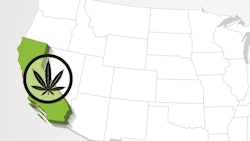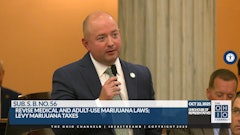
 by Kyle Brown
by Kyle Brownby Kyle Brown
Oregon medical marijuana dispensaries begin early retail sales of marijuana for recreational use Oct. 1, starting a program that will continue to expand into 2016 with licensed recreational providers.
The early retail sales are the first part of the plan put into motion by Measure 91 and House Bill 3400, which lay out guidelines for regulating recreational sales of marijuana from Oct. 1 through Dec. 31, 2016. The Oregon Liquor Control Commission (OLCC), which has oversight on the regulation, won’t be able to license new producers and retailers until sometime next year. In the interim, the Oregon Health Authority (OHA) will work with already-established growers and dispensaries to provide for the program, says Jonathan Modie, communications officer at the OHA.
“Since 1998, we’ve had a robust and very efficient medical marijuana program here, we’ve had a dispensary program since 2014,” says Modie. “The legislature felt we could provide in the interim until the licensed retail establishments get up and running probably the middle of next year.”
On Oct. 1, medical dispensaries can let the OHA know they’re participating in the early retail sales by submitting a form and complying with other standards for sales regulation. Some of the other requirements for participating dispensaries stipulate that they must:
- Post a flyer in the front window that establishes only people 21 and older are allowed inside, or 18 or older if they are a registered cardholder.
- Post educational signs at the point of sale about risks to pregnancy and poisoning, as well as safe storage away from children.
- Develop a written policy to outline steps to ensure dispensaries do not sell more than the allowed products to retail customers.
- Develop a system to document the type of product sold, the amount of product sold, the birthdate of the retail customer, the sale price and date of sale.
Initially, until the end of this year, recreational marijuana is sold under a tax holiday. That will change in January, when recreational marijuana purchased at a medical dispensary comes with a 25 percent tax.
Currently, retail customers can purchase up to 0.25 ounce of dried leaves or flowers per day, and up to four immature marijuana plants in total during the 15-month early retail period. At least during this early retail period, no extracts, oils, concentrates or edibles can be sold. No limits on possession have changed—customers can possess eight ounces of useable marijuana in the home and one ounce outside the home.
Also currently unchanged are rules for growers: Since the OLCC won’t license growers until next year, supply will be limited. Currently, growers can grow up to six plants for each licensed cardholder they are working with. Though some customers and patients are concerned about the availability of marijuana, Modie encourages communication with growers.
“We don’t have any control over inventory for marijuana patients,” says Modie. “I can’t say what changes could be afoot related to how much can be grown for patients—perhaps no changes. But I really think at this time it may be difficult to speculate what changes will be made to help growers meet the demands of the retail market.”
Part of meeting those demands includes greater oversight for producers and accrediting labs to test products.
Rules will be developed over the next year as the OLCC prepares to make the shift to a fully licensed system from seed to sale. Once the legislature meets in February 2016, they can look at how recreational sales have progressed to make adjustments in the law. For right now, the focus is on developing the tools for applications for producers and retailers to become licensed, according to Mark Pettinger, public affairs for the OLCC.
“We need to get our online applications up and running, we need to make sure seed-to-sale is working. We need to get our regulatory specialists trained and out in the field. We need to meet with various stakeholders,” says Pettinger. “We’ve got a pretty heavy lift over the next 12 weeks.”
Once those rules are in place and the first retail licensed establishment is opened under the OLCC system, a new tax standard goes into effect as well. The state will impose a 17 percent tax on retail products, and jurisdictions that allow the sale will be able to impose up to an additional three percent tax. Also, there will be no cap to purchases under the OLCC system, says Pettinger.
Recreational purchases during that overlap time to the end of 2016 will still be able to be made at medical dispensaries, but the 25 percent tax and 0.25 ounce cap will remain in effect until the end of the program.
The OHA program goes into effect Oct. 1, but the OLCC will be voting on the temporary rules for the system at the end of the month. The OLCC will be taking public testimony about the program Oct. 9.

























